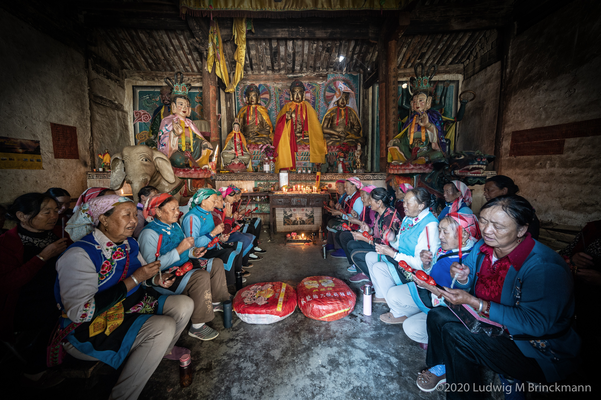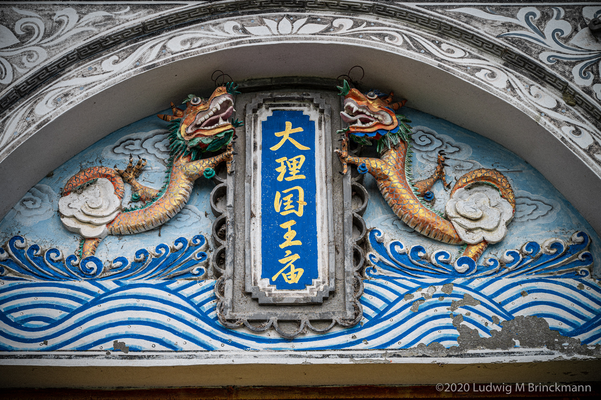A clan temple on the slopes of a burial hill near Xizhou.
Fazi Temple is probably the last clan temple in Xizhou that survived from before the communist period. The temple is set on the slopes on a burial hill called 弘圭山, a foothill of Cangshan, south of 万花溪. This hill is still actively and extensively used for burials, but, as excavations have shown, it has been used for burials since the Han dynasty.
Above the temple entrance the inscription reads 懂氏墓庐, meaning the burial temple of the Dong Family.
The Dong family was one of the richest and most influential families in pre-communist Xizhou, running many trading firms. Francis Hsu in his "Under the Ancestor's Shadow" states that there were once 12 such ancestral halls, Fazi Temple is likely to be one of them.
The temple has a simple 三坊一照壁 traditional layout, with the screen wall facing outwards from the small ravine in which the temple is built. The main hall seems to have been converted from a temple hall with a double-height (but single story building) into living quarters on two floors as the wooden structure is still relatively sturdy. A crude stove was built on the side, most likely for cooking simple food not only for the inhabitants but also maybe livestock, such as a pig. Today, only a makeshift altar is in the middle of the central building where also otherwise nothing suggests that it was once a temple. The temple is locked, but since the side wall has collapsed access to the interior is easy.
Near the entrance is a Cultural Revolution quote from Chairman Mao, reading
我们应该谦虚,谨慎,戒骄,戒躁, 全心全意地为中国服务
(thus slightly misquoting the original), while on the outside on the screen wall a large picture of Chairman Mao can still be discerned.
While the temple is marked on some maps, otherwise there is little information about it available, a gazetteer from 1987 notes the following:
法资寺 在喜洲镇西部,点苍山五台峰麓,江渡村西。据传:元代,江渡村何姓三支祖先,名“法资”,学识渊博,为附近村民做了许多有益事情。法资死后,当地群众为纪念他,在红圭山前建寺,名“法资寺”。面积约10亩,现寺已残破,作地片保留。
This suggests that the temple was originally built during the Yuan dynasty in honour of a member of the 何 family (this is also a common surname in the region, to this day many graves in the vicinity are for members of that clan).
An old gazetteer simply notes the approximate location and that the temple was founded during the Yuan Dynasty:
法资寺:大理府志在城北五台峰麓元时建
Presently the building is facing collapse, even locals do not seem to be aware of its existence.








